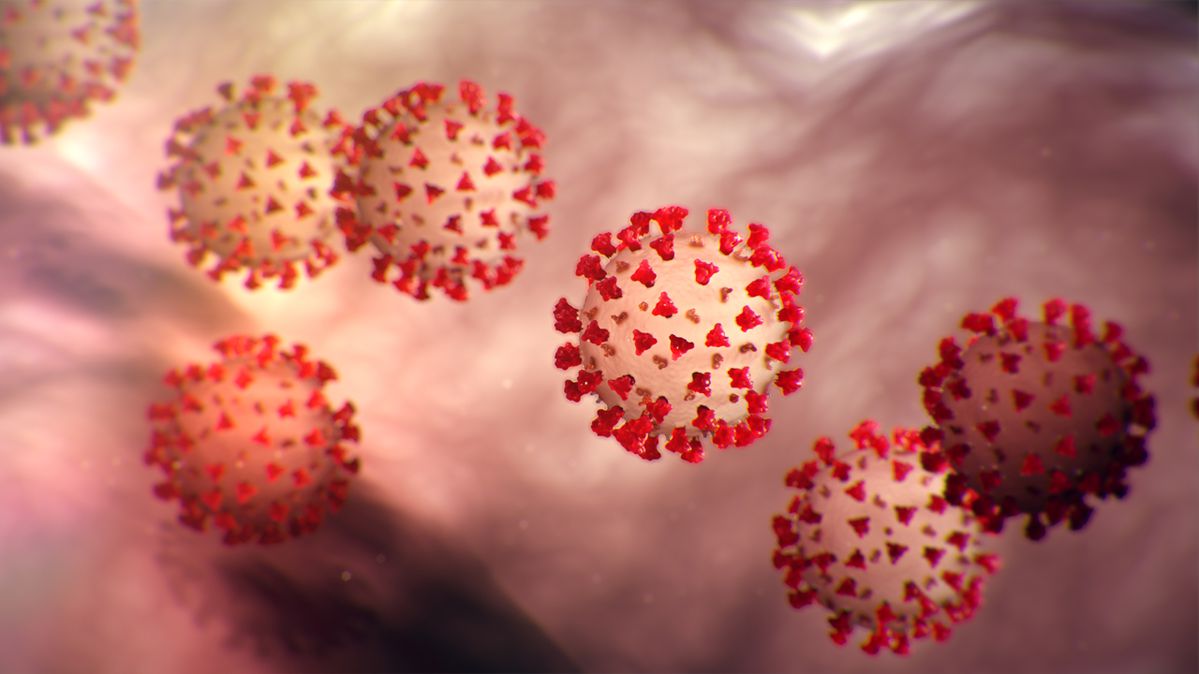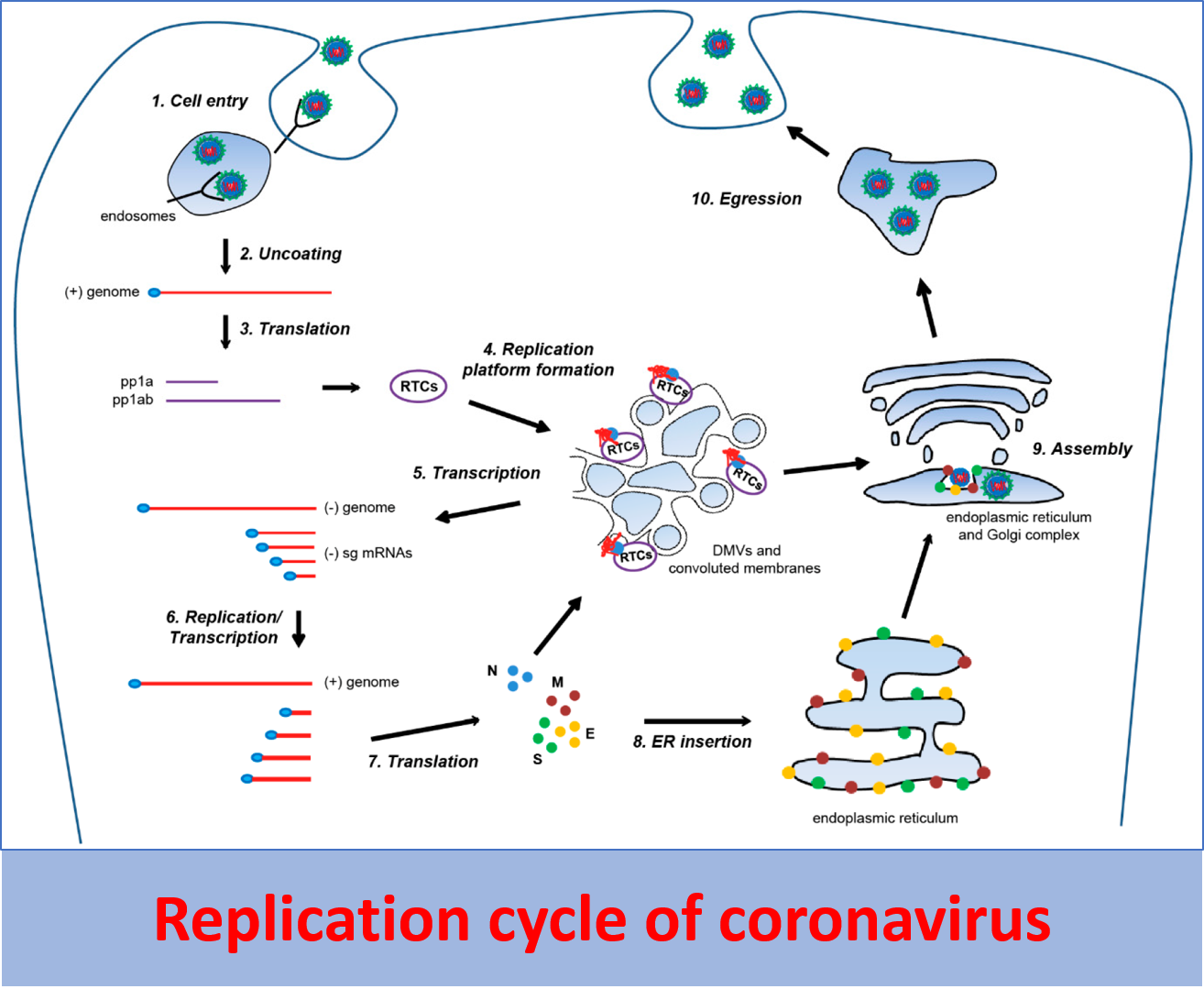
After the novel coronavirus 2019 (2019-nCoV) enters the body, it needs a special receptor to help its attachment and entry into the cell. This receptor is known as Angiotensin Converting Enzymes 2. It is symbolized as ACE-2.
The ACE-2 is present on the surface of all alveolar cells in the lungs.
There are 3 types of alveolar cells in the lungs, which are the following:
Type 1: It is responsible for gas exchange.
Type 2: It is responsible for producing “surfactant proteins” which are a mixture of proteins and fats that decrease the surface tension of the alveoli in the lungs.
Type 3: These are called dust cells, which are actually the macrophages.
The ACE-2 is present on type 2 of these cells.
The Coronavirus envelope contains proteins called spike proteins (S_Spike) that help virus binding to ACE-2.

When the above virus-host interaction has been established, the genetic material of the virus enters the cell and then the virus takes control of the host cell machinery and starts producing viral proteins. This is how the virus multiplies in the host cells, and ultimately the cells die.
When (type 2 alveolar cells) die, they release substances called specific inflammatory mediators. These substances stimulate the existing immune cells which are called macrophages. When macrophages are activated, they secrete 3 important substances called “cytokines”. These cytokines are Interleukin 1 (IL-1), Interleukin 6 (IL-6), and Tumor Necrosis Factor (TNF-α).
These three cytokines, after entering the bloodstream, actually cause the symptoms associated with the infection of Coronavirus.
Symptoms at the level of lungs include:
1) These substances cause expansion of the blood vessels surrounding the vesicle, as well as increased permeability of the wall of these vessels, a phenomenon called vasodilation occurs. Capillary permeability is increased and thus leads to alveolar edema. This results in hypoxia and shortness of the breath.
2) The loss of surfactant proteins leads to an increase in the surface tension of the vesicles and consequently leads to alveolar collapse. It also leads to hypoxia and then shortness of breath.
3) These three substances also lead to an increase in the influx of “neutrophils” to the place of the viral infection as an immune response. Neutrophils kill some viruses by secreting two substances. One is reactive oxygen species “ROS” and the other is proteases. But the above substances also destroy some of the alveolar cells responsible for gaseous exchange and cause a condition called consolidation, leading to cough symptoms.
At the level of the central nervous system, the three substances, i.e., IL-1, IL-6, TNF-α, reach the hypothalamus and thus increase the body temperature, and ultimately cause the symptoms of fever.
In the case of severe systemic inflammatory response syndrome (SIRS) occurs, it leads to septic shock. Also, multiple organ dysfunction syndromes (MODS), especially the kidney and kidney failure, occurs.
Read more on the treatment options of the COVID-19.
Leave a Reply